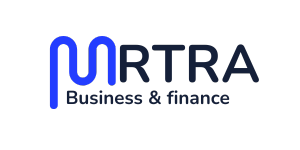How to Manage Digital Assets: A Comprehensive Guide

Digital Asset Management (DAM) refers to the systematic management of digital data files through specialized software applications. This management process allows owners to perform various operations on their data files, enhancing organization, retrieval, and utilization of digital content.
The Importance of Digital Asset Management
Managing assets effectively is vital for businesses and organizations in an increasingly digital world. As digital content grows exponentially, the need for efficient management systems becomes even more pressing. Proper digital asset management not only enhances productivity but also ensures that valuable content is accessible and secure.
1. Cloud-Based Digital Assets management Systems: Increasing Efficiency
Cloud-based DAM systems offer organizations the agility and efficiency needed to manage digital assets effectively. By enabling teams to access content anytime and anywhere, these systems significantly reduce the time spent searching for files. Key benefits include:
- Accessibility: Team members can access the latest assets without being physically present in the office, facilitating remote work and collaboration.
- Scalability: Cloud solutions allow organizations to scale their storage and processing capabilities without the heavy investment required for on-premise systems.
- Cost Savings: By avoiding unnecessary hardware costs and maintenance, companies can allocate resources more efficiently.
However, businesses must also consider the specific needs of their operations when choosing between cloud-based and on-premise solutions.
2. On-Premise DAM Solutions: Weighing the Pros and Cons
On-premise Digital Asset Management (DAM) solutions involve installing software directly on the organization’s servers. While these systems offer several advantages, they also come with significant challenges that businesses must consider before making a decision.
Advantages of On-Premise DAM Solutions
- Greater Control Over Data:
Organizations have complete control over their data and can implement customized security protocols. This is particularly important for businesses handling sensitive information, such as financial records or proprietary content. - Enhanced Security:
On-premise systems can provide a higher level of security, as data is stored internally rather than on external cloud servers. Companies can implement their own cybersecurity measures, such as firewalls and intrusion detection systems, to protect against threats. This is particularly valuable in industries with strict regulatory compliance requirements, like healthcare and finance. - Customization and Integration:
On-premise DAM solutions often allow for extensive customization. Organizations can tailor the software to fit their unique workflows and integrate it with existing internal systems, such as Customer Relationship Management (CRM) or Enterprise Resource Planning (ERP) systems. This level of integration can lead to improved efficiency and better data management. - Performance and Speed:
Because the software runs on local servers, on-premise solutions can offer faster performance, especially for companies with large digital asset libraries. This reduces latency and ensures that users can access files quickly, which is crucial for time-sensitive projects.
Challenges of On-Premise DAM Solutions

Resource Intensive:
Managing an on-premise DAM system can be resource-intensive, requiring skilled personnel to oversee the infrastructure and ensure its optimal performance. This can lead to increased operational costs, particularly if the organization does not already have an experienced IT team.
High Initial Costs:
Setting up an on-premise DAM solution requires significant upfront investment in hardware, software licenses, and IT resources. This can be a barrier for small to mid-sized organizations, which may find cloud solutions more financially viable.
Maintenance and Upgrades:
Organizations are responsible for ongoing maintenance, updates, and troubleshooting. This requires dedicated IT staff and resources, which can divert attention from core business activities. Additionally, software updates can be disruptive and require downtime for implementation.
Limited Scalability:
On-premise solutions can face limitations in scalability, especially as a company grows and its digital asset needs increase. Expanding storage and processing capabilities often requires purchasing additional hardware, which can be costly and time-consuming.
3. Security Threats: Protecting Your Digital Assets
When managing digital assets, being aware of potential security threats is crucial. These threats can stem from both internal and external sources. Investing in robust security solutions is essential to safeguarding your company’s digital assets and maintaining brand credibility. Here are some critical measures to consider:
- Establish a Strong Network Perimeter: Implementing a robust firewall can block unauthorized web traffic and protect against DDoS attacks.
- Enforce Strict Access Control: Implement granular permissions for users and partners to ensure only authorized personnel can access sensitive data. Consider using multi-factor authentication to further enhance security.
- Employee Training: Educate employees on best practices for password management and identifying phishing attempts. Regular training can significantly reduce the likelihood of security breaches.
Despite these precautions, organizations must remain vigilant, as cybercriminals continuously seek new vulnerabilities. Regularly auditing your security measures and staying updated on the latest cybersecurity trends can help mitigate these risks.
4. Organizing Digital Marketing Assets: Making Them Searchable
To ensure your digital marketing assets are not only useful but also easily discoverable, it’s essential to build a comprehensive library of marketing materials. This library should include images, videos, presentations, audio files, and other relevant media. Key strategies for effective organization include:
- Centralized Asset Repository: A well-rounded marketing asset library helps save time and money by consolidating crucial business materials in one place. This serves as a vital reference for colleagues and clients.
- Implementing Metadata: Adding descriptive tags and metadata to your digital assets enhances searchability. This makes it easier for team members to locate files quickly.
- Utilizing DAM Tools: Platforms like Brandfolder or Bynder can help sift through extensive collections of files and organize them in a user-friendly manner.
Maintaining an up-to-date database of marketing assets is essential for any organization. Regularly review and update your library to ensure that the most important files are stored properly and easily accessible.
5. Simplifying the File Management Workflow with DAM
In the realm of digital media, Digital Asset Management (DAM) streamlines the entire file management workflow. By efficiently storing, organizing, and sharing digital content, DAM not only ensures secure management of assets but also allows for quick retrieval of necessary files.
- Asset Sharing: Whether it’s videos, photos, or logos, digital assets can be easily shared with team members or accessed remotely, promoting collaboration.
- Tailored Solutions: Different companies have varied needs for their digital assets. Organizations should tailor their DAM approach based on their specific requirements, considering factors like team size and project complexity.
The average mid-sized company downloads approximately 60,000 assets annually. Managing these assets effectively can be time-consuming. Adopting a cloud-based media library can save costs while providing the flexibility and scalability that modern organizations need.
Conclusion: Embracing Efficient Digital Asset Management
In conclusion, effective management of digital assets is essential for any organization looking to enhance productivity and secure valuable content. By leveraging cloud-based DAM systems, implementing robust security measures, and organizing marketing assets efficiently, businesses can ensure that their digital resources are accessible, secure, and optimized for success.
As digital landscapes continue to evolve, organizations must stay informed about best practices in digital asset management to navigate challenges and capitalize on opportunities. By investing in the right tools and strategies, companies can position themselves for long-term success in a digital-first world.




